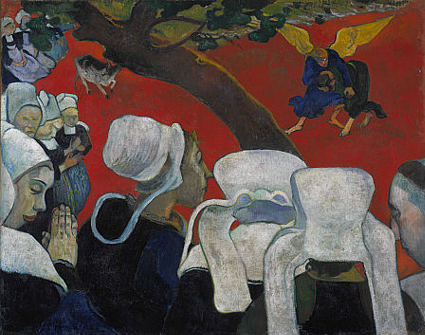NEAR THE end of the superb, once-in-a-lifetime Gauguin exhibition currently at the Grand Palais, you find the artist's Christ in the Garden of Olives. Despite the title, it is a self-portrait (that long, uneven jaw-line, that crooked blade of a nose are unmistakable), an image of the artist as a misunderstood genius. Downcast, he crouches alone in a landscape of desolate simplicity, its windblown olive trees flattened patches of colour on an empty horizon.
Gauguin painted Christ in the Garden of Olives in 1889. 14 years before his death, in desperate circum-stances, in the South Seas, he is already making out his itinerary. 'There is a road to Calvary that all we art-ists must tread,' he wrote to Van Gogh, as a gloss on this painting.
Gauguin happily contributed to the myth of Gauguin - the man with a one-way ticket to tragedy, crucified by the intensity of his desire for a life and art of primitive simplicity - which would feed the kind of bio-pic sensationalism through which the 20th century has had its perception of so many great artists filtered. But the 250-plus exhibits at the Grand Palais - including many loans from the USSR which have not been seen in the West for years - suggest that the truth about Gauguin was both more complicated and more interesting. He emerges as an artist whose brilliance was always shot through with doubt, whose quest for the unspoiled Eden of his imagination led him, in fact, to a place and an art that proved far less simple than he had hoped.
Early, Impressionist Gauguin is characterised by the kind of derivativeness, the reliance on a melange of precedents, that you might expect in an artist still struggling to formulate his position. Apple Trees in the...

Pacific Overtures
24-01-1989

